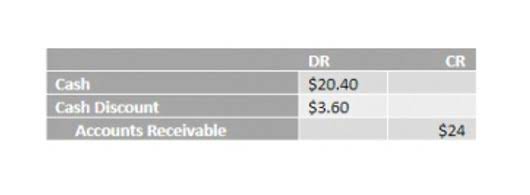Topic no 429, Traders in securities information for Form 1040 or 1040-SR filers Internal Revenue Service

In short, mark-to-market accounting is about making sure the balance sheet adjusting entries value of assets reflects real-world market conditions rather than just historical costs. This provides greater transparency into a company’s true financial health at any given moment. However, it’s important to understand that forming an LLC doesn’t change your tax situation with regard to trader tax status and MTM accounting. A single-member LLC is disregarded for federal tax purposes, meaning the trading gains and losses flow through to your personal tax return just as they would for a sole proprietorship.

Schedule C—Changes Within the LIFO Inventory Method
In an attempt to hide the losses, Enron set up a number of special shell corporations known as Special Purpose Entities (SPEs). For example, if a trader purchased securities for $50,000 and their year-end value is $55,000, a $5,000 gain is reported as ordinary income. This method enables traders to offset other ordinary income, potentially reducing their taxable income. Strictly FRS102 only allows the use of the lower of cost and net realisable value as a method for valuing stock.
- The following example illustrates how an applicant calculates the section 481(a) adjustment when changing to an accrual method, a nonaccrual-experience method, and the recurring item exception.
- By reflecting current market values, it helps investors and stakeholders understand how much assets are worth right now, which can influence investment decisions and financial reporting.
- Enron used mark-to-market accounting to book revenue from long-term contracts, including energy supply agreements, as soon as the contracts were signed, rather than waiting for the revenue to be earned over time.
- For purposes of this legal ruling, all references to “securities held at year end” or “dealer-held securities” shall be to securities to which IRC § 475 applies.
- In a matter of months, the house of cards began to fall, cumulating in the shocking news of the December 2001 Enron bankruptcy.
- If Form 3115 is being filed on behalf of multiple applicants or if multiple items are being changed on one Form 3115, check all that apply and attach a statement identifying which category applies to which applicant or item.
Related legal terms
In summary, mark to market (MTM) is an essential tool for evaluating the current worth of assets and investments. However, it is crucial to recognize its limitations, particularly during periods of market instability or illiquidity. The ability to adapt accounting standards to address these challenges has been critical in ensuring reliable financial reporting. As such, companies use mark-to-market accounting to report their assets and liabilities at the estimated amount of money they would receive if they sold the assets or if their liabilities were paid off in the market today. By using contemporary and market-based measurements, mark-to-market accounting aims to make financial accounting information more is mark to market accounting legal updated and reflective of current real market values.

Adjusting Balance Sheets for Mark-to-Market Valuations

Gains and losses must be reported on Form 4797, “Sales of Business Property,” instead of Schedule D, which is used for capital gains and losses. Form 4797 accommodates the ordinary income treatment required under the mark-to-market method. Skilling transitioned Enron’s accounting from a traditional historical cost accounting method to a mark-to-market (MTM) accounting method, for which the company received official U.S. View it as keeping inventory of not only the quantity of assets, but also the prices as well. All mark to market does is simply align the value of assets to the value that it would acquire in the present conditions of the market. Of course, the origins of this value stems from the capital a company would gain if they sold that asset right there and then.
- Instead, it looks at a taxpayer’s trading activity and applies a set of general principles.
- For example, allowing banks to carry assets at amortized cost rather than fire-sale prices.
- However, in some cases, the method can be manipulated, since MTM is not based on actual cost but on fair value, which is harder to pin down.
- The use of mark to market (MTM) extends beyond accounting practices, significantly impacting the financial services industry and its various players.
- The primary reason for marking these assets to market is to provide a more accurate and up-to-date representation of a company’s or institution’s financial situation based on ever-changing market conditions.
Explaining Mark-to-Market Valuation and Its Purpose
- Deals were monitored on a quarterly or annual basis, when gains or losses would be acknowledged or payments exchanged.
- Under section 475, Congress enacted rules that require dealers in securities to apply mark-to-market (MTM) accounting to their securities portfolios.
- Prices in financial markets fluctuate constantly, but traders and institutions need a standardized value to settle accounts.
- Traders must carefully track the type of options they trade to ensure accurate reporting.
- One of his brightest recruits was Andrew Fastow, who quickly rose through the ranks to become Enron’s chief financial officer.
- Moreover, company boards of directors became more independent, monitoring the audit companies and quickly replacing poor managers.
Problems can occur when the market-based measurement does not accurately represent the underlying asset’s true value. This can occur when a company is forced to calculate the selling price of these assets or liabilities during unfavorable or volatile times, such as a financial crisis. For example, if the liquidity is low or investors are fearful, the current selling price of a bank’s assets could be much less than the value under normal liquidity conditions. This case occurred during the 2008 financial crisis, where many securities held on banks’ balance sheets could not be valued efficiently as the markets had disappeared from them. Publicly traded securities, including stocks and bonds, are marked to market under Accounts Receivable Outsourcing ASC 320 (Investments—Debt and Equity Securities) in GAAP and IFRS 9 (Financial Instruments) under International Financial Reporting Standards. Equity securities with readily determinable fair values are reported at market price, with changes recognized in net income.

Categories
- ! Без рубрики
- .gruporcv.es
- .inhisetconsulting.com
- .rutadelamilpa.mx
- 1
- 1bet5
- 1GullyBet
- 1win Azərbaycan
- 1win-azerbaycan.az
- 1win-qeydiyyat.com
- 1winazerbaycan.org
- 1xbet
- 1xbet-uzbek.org
- 1xbet1
- 1xbet2
- 1xbet3
- 1xbet3231025
- 1xbet4
- 1xbet7
- 1xbetcasinoonline.com
- 2
- 20betschweiz.ch
- 22betofficial.com
- 22betschweiz.com
- 40-burning-hot-6-reels.gr
- a16z generative ai
- a16z generative ai 1
- adobe generative ai 1
- adobe generative ai 2
- AI News
- almas-barbershop.de
- apolonio.escasinos-con-deposito-minimo-1-e
- aquaservice-alicante.es
- atlas-export.c
- bcg4
- bcgame1
- bcgame2
- bcgame3
- bcgame4
- bedpage
- berkeleycompassproject2
- berkeleycompassproject3
- bet1
- bet2
- bet3
- betwinner1
- betwinner2
- betwinner3
- betwinner4
- bildungsinstitut-reittherapie.de
- blog
- bonanzagame
- bonanzareels
- Bookkeeping
- Casino
- casino1
- casino1-1
- casino10
- casino10-1
- casino11
- casino12
- casino13
- casino14
- casino15
- casino16
- casino17
- casino18
- casino18-1
- casino19
- casino2
- casino21
- casino22
- casino23
- casino24
- casino25
- casino26
- casino28
- casino29
- casino3
- casino30
- casino31
- casino4
- casino5
- casino6
- casino7
- casino8
- casino9
- cccituango.co 14000
- CH
- chat bot names 4
- CIB
- cienmilpeces.cl
- citybike-nordhorn.de
- cityoflondonmile1
- cityoflondonmile2
- cityoflondonmile3
- cityoflondonmile4
- coincasino
- comedychristmas.ch
- Cryptocurrency service
- cultura.cosenza
- Delivery Service 191
- dxgamestudio.com
- E-commerce
- EC
- elagentecine.cl
- ERP
- esqueleto-explosivo
- exbroker1
- Excursions 611
- exness3
- exoneit.de
- f1point0.com
- Fairspin-casino
- fanarbeit.ch
- farma3
- farma4
- farmacia
- farmacia1
- farmacia2
- FinTech
- firstdepositbonus
- Forex Trading
- fysiotek.gr
- gameaviatorofficial.com
- games
- gullybetofficial.com
- hospicehomejc.org
- hotlinecasino
- how does generative ai work
- i-ksiazka.pl
- icesailing.dk
- icestupa1
- icestupa10
- icestupa13
- icestupa2
- icestupa3
- icestupa4
- icestupa6
- icestupa7
- icestupa9
- IGAMING
- inasound.ru
- IT Vacancies
- IT Вакансії
- IT Образование
- ivibetcasino.ch
- jaya9
- jaya91
- jaya92
- jaya9casino
- Jetton
- jetton 23.09
- Jetton KZ
- Jetton RU
- jetton ru 23.09
- komod-testfeld
- linebet-uzbekistan.org
- linebetonline.org
- lucky-star1
- lucky-stars
- mandarin-oriental.ru
- marktkauf-shs.de
- mega168bet.com
- meta-park.es
- metody-platnosci.pl
- minaevlive.ru
- mostbet-oynash.org
- mostbetuzcasino.com
- nationalnurse.org
- News
- News - Copy (2)
- News - Copy (3)
- Odoo
- Omegle
- Omegle cc
- omitapparel
- Online Casino
- orthopaedic-partners.de
- pdrc
- Pin-Up
- Pin-Up giriş
- Pinco
- Pinco TR
- Pinup Azərbaycan
- pocket1
- pocket2
- pocketoption2
- pocketoption3
- pocketoption4
- poland
- Post
- posts
- press
- primexbt1
- primexbt2
- primexbt3
- rabonaonline.de
- ready_text
- reviews
- sansalvatrail.ch
- SBOBET1
- slots
- Sober living
- Software development
- spinmachine
- spinmama-pl
- spinmamacasinos
- stories
- styleconnection
- sugar-rush-1000.com.gr
- sugarrushslots
- sysgestionerp.cl
- t-store-smart.uz
- test
- text
- themadisonmed.com
- thereoncewasacurl
- thesaintaustere.com
- trading4
- trading5
- trygge-norske-casino
- ulola.hr
- Uncategorized
- updates
- vistetealamoda.es
- vohapress.uz
- wingsoverpittsburgh.com
- yetsetboutique
- zendesk vs. intercom
- zurkastanie-marl.de
- Текста
- Финтех
- Форекс обучение